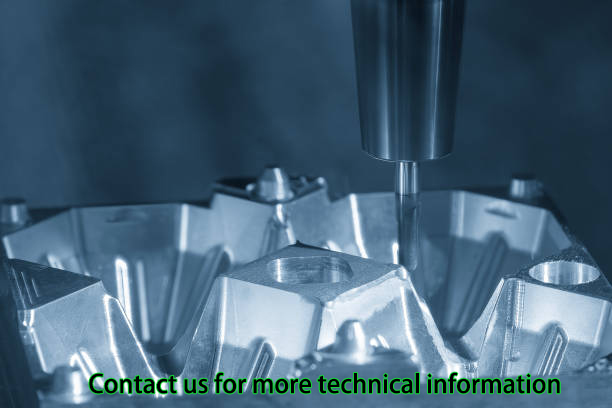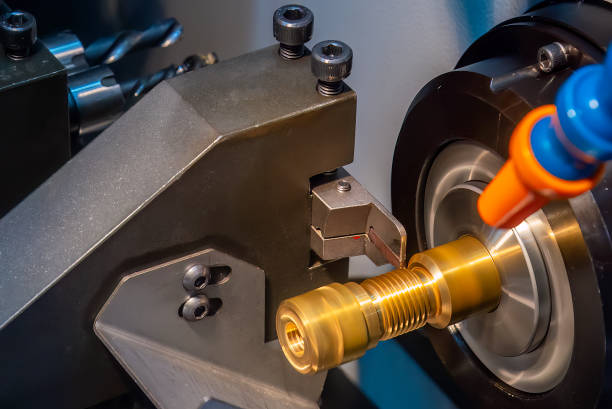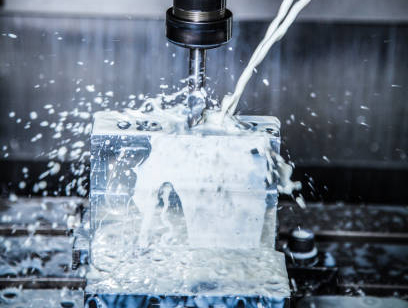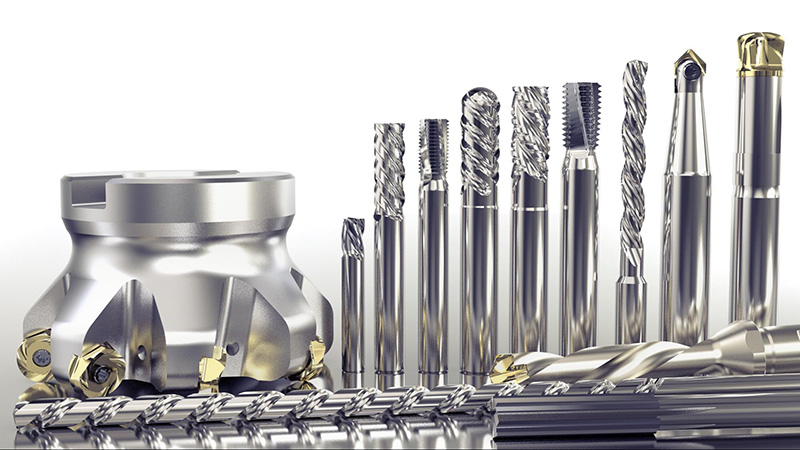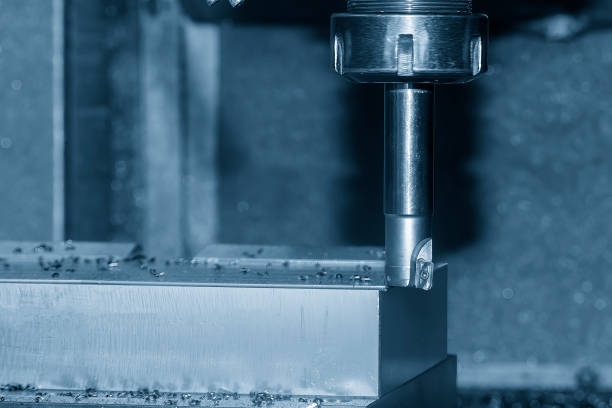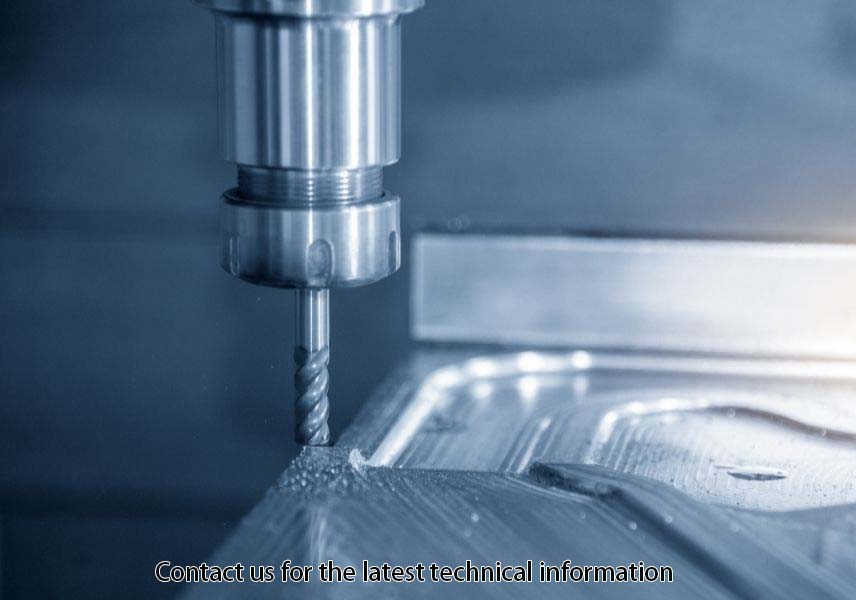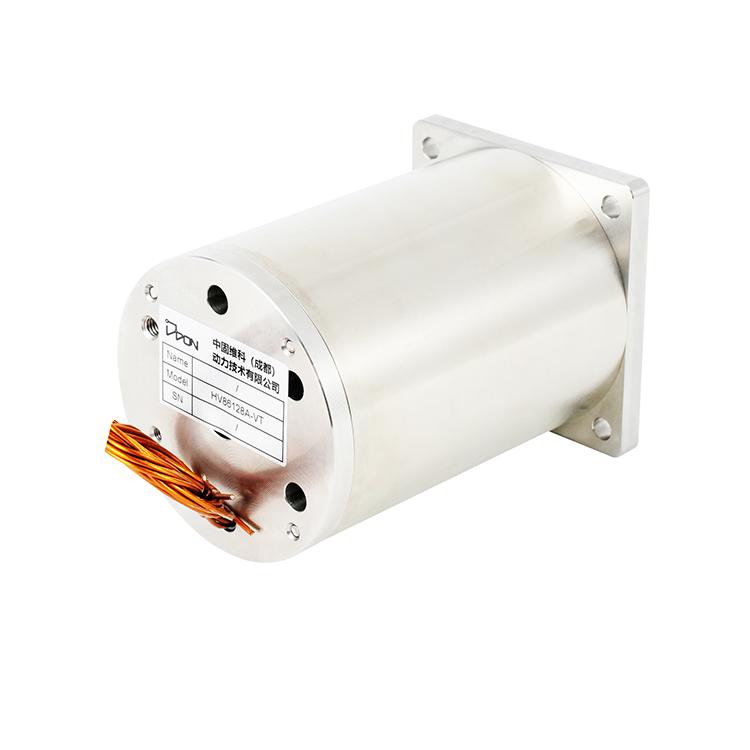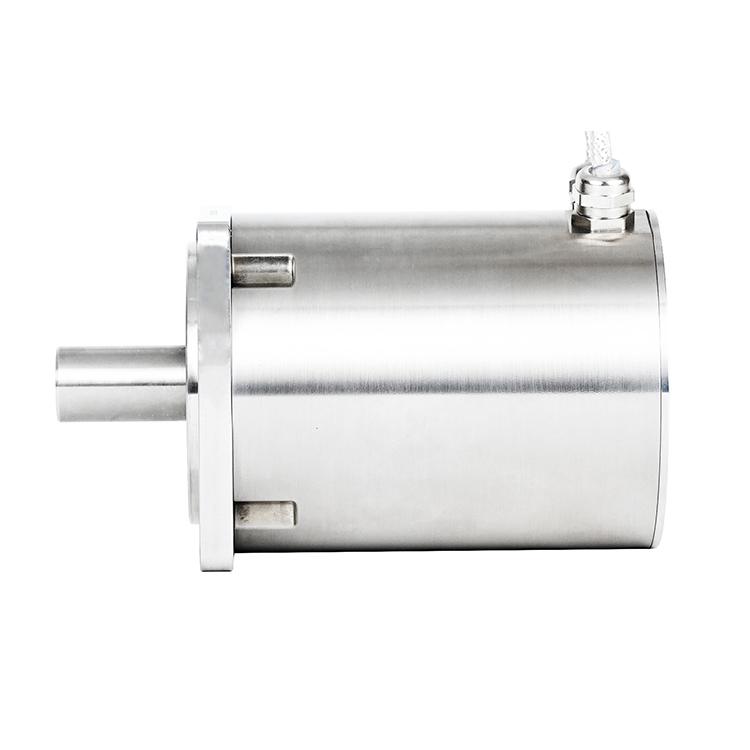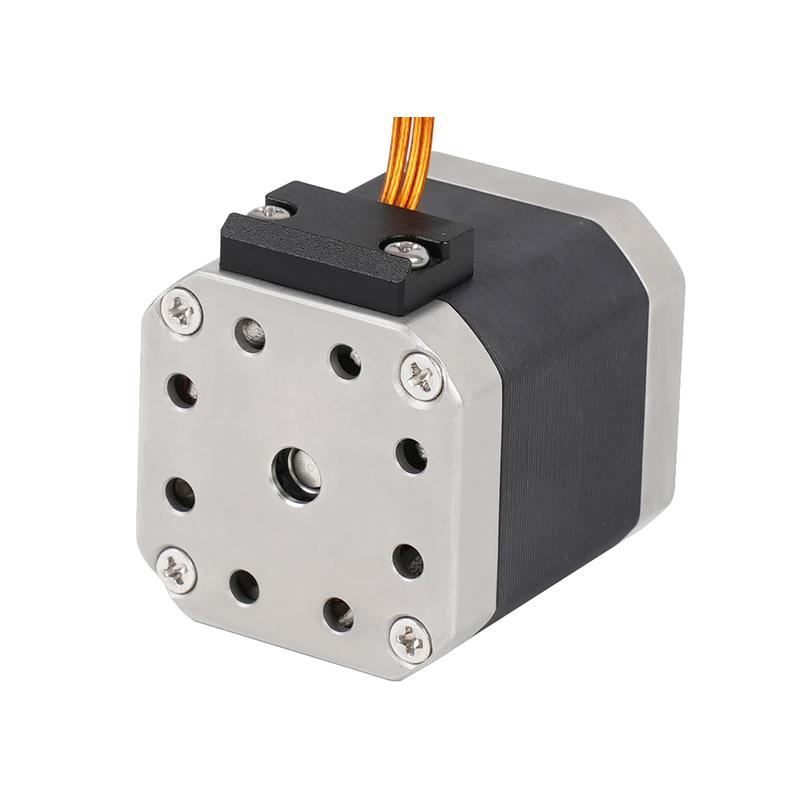CNC Mill Operator Career Guide
A career as a CNC (Computer Numerical Control) Mill Operator provides an opportunity to work in one of the most vital and technically demanding areas of manufacturing. These operators are instrumental in producing the precision components needed for industries such as aerospace, automotive, and medical devices, ensuring that designs are transformed into high-quality, functional products.
As manufacturing processes evolve, the role of a CNC Mill Operator has become increasingly important. Their responsibilities extend beyond simply running machines; they are involved in setting up equipment, ensuring product quality, and maintaining efficiency throughout the production process.
This guide covers everything you need to know about becoming a CNC Mill Operator, including key responsibilities, essential skills, salary prospects, and steps to get started. Whether you're starting your career or transitioning into a new field, this guide will help you understand the path to success in CNC milling.
What is a CNC Mill Operator?
CNC milling is a manufacturing process that involves removing material from a workpiece using rotary cutting tools. The process is controlled by a computer system, which follows a programmed set of instructions to create parts with precise dimensions and features. This method is widely used in industries that demand high accuracy and consistency, such as automotive and aerospace manufacturing.
Role of the CNC Mill Operator
The role of a CNC Mill Operator is integral to the precision manufacturing process. They are responsible for setting up, operating, and maintaining CNC milling machines to produce components that adhere to design specifications. This involves several key tasks, including machine setup, where they configure the equipment for the specific job; operating the machine to execute the programmed instructions; conducting quality control checks to ensure that the final product meets strict standards; and performing routine maintenance to keep the machinery in optimal condition.
A CNC Mill Operator must possess a combination of technical expertise, hands-on skills, and problem-solving abilities. Their role is crucial in maintaining efficiency and ensuring that high-quality, precision-engineered products are consistently delivered.
How CNC Mills Work
CNC mills follow a structured process to shape materials into finished products:
● Programming: Engineers create a design using CAD (Computer-Aided Design) software, which is converted into machine-readable instructions through CAM (Computer-Aided Manufacturing) software.
● Setup: The operator secures the material to the machine and installs the necessary cutting tools. Calibration is carried out to ensure accuracy.
● Machining: The machine executes the programmed instructions, with the cutting tools rotating and moving along predefined paths to shape the workpiece.
● Post-Processing: After machining, the operator inspects the part for accuracy and may perform additional steps like polishing or deburring to improve the surface finish.
By combining precision and efficiency, CNC milling has become an essential process in modern manufacturing, and CNC Mill Operators play a vital role in its success.
Key Responsibilities of a CNC Mill Operator
Setting Up CNC Machines
One of the most critical tasks of a CNC Mill Operator is setting up the machine before production begins. This involves a series of steps to ensure everything is prepared for a smooth operation. The operator starts by loading the raw material, such as metal or plastic, onto the machine’s worktable or fixture, securing it in place to avoid movement during machining. Next, the necessary cutting tools are installed into the machine’s spindle or tool changer. Once the tools are in place, the operator verifies the machine’s program by cross-checking the instructions with the design specifications to ensure accuracy. Proper setup is essential, as it directly affects the precision and quality of the final product.
Machine Operation
During production, CNC Mill Operators oversee the machine’s performance to ensure it runs efficiently and produces parts according to the program. They monitor key functions, such as spindle speed, feed rate, and tool movement, making real-time adjustments if necessary. Operators must stay attentive to detect any irregularities, such as tool wear or material deformation, which could compromise the final product. Their role is to maintain consistent output while minimizing machine downtime.
Quality Control and Precision
Ensuring parts meet design specifications is a top priority for CNC Mill Operators. They inspect finished components using precision measuring tools like micrometers, calipers, and coordinate measuring machines (CMMs) to confirm dimensions and tolerances. Operators must also perform periodic checks during production to catch any potential issues early and ensure that each part complies with quality standards.
Machine Maintenance
Routine maintenance is another key responsibility. Operators regularly clean machines, lubricate moving parts, and check for wear and tear to prevent unexpected breakdowns. Minor repairs, such as replacing worn-out tools or tightening loose components, are often handled by the operator. For more complex issues, they coordinate with maintenance technicians to resolve problems quickly and minimize production delays.
Safety and Compliance
Safety is paramount in any manufacturing environment. CNC Mill Operators follow strict safety protocols, including wearing personal protective equipment (PPE) such as safety glasses, gloves, and steel-toe boots. They ensure machine guards are in place and functional to protect against hazards. Additionally, operators adhere to workplace safety regulations and procedures to create a safe and efficient work environment for themselves and their colleagues.
By balancing these responsibilities, CNC Mill Operators contribute significantly to the efficiency, safety, and quality of manufacturing processes.
Essential Skills for a CNC Mill Operator
Technical Skills
A CNC Mill Operator must possess a strong foundation in technical knowledge to excel in their role. This includes understanding G-code, the programming language used to control CNC machines, and interpreting detailed blueprints to ensure the production meets exact specifications. Familiarity with CAD/CAM software, which translates design concepts into machine-readable instructions, is increasingly valuable. Additionally, operators need to be proficient in using CNC software interfaces to set up machines, monitor operations, and make necessary adjustments during production. Mastery of these technical skills is essential to achieving accuracy and efficiency on the shop floor.
Attention to Detail
Precision is the cornerstone of CNC milling, especially in industries that demand tight tolerances, such as aerospace or medical manufacturing. Operators must meticulously follow design specifications, monitor machine operations, and inspect finished components to ensure they meet exact dimensions and quality standards. A keen eye for detail can prevent costly errors and rework, making this skill indispensable in the role.
Mechanical Aptitude
An understanding of mechanical systems is crucial for troubleshooting and maintaining CNC machines. Operators who grasp how components like spindles, cutting tools, and feed systems work together are better equipped to identify and resolve issues. Whether it’s diagnosing a misaligned tool or recalibrating a machine, mechanical aptitude helps ensure consistent performance and minimizes downtime.
Problem-Solving
CNC milling often involves unexpected challenges, such as tool breakage, material inconsistencies, or software glitches. Effective problem-solving skills enable operators to quickly identify the root cause of an issue and adapt by recalibrating the machine, adjusting feed rates, or modifying settings. The ability to think critically and make real-time decisions is a key factor in maintaining smooth operations.
Physical Requirements
The role of a CNC Mill Operator demands physical stamina and endurance. Operators are often required to stand for long hours, lift heavy materials or tools, and maintain focus in a fast-paced environment. Good physical fitness and the ability to handle repetitive tasks without losing precision are vital for success in this role.
Soft Skills
Beyond technical expertise, CNC Mill Operators must excel in communication, teamwork, and time management. Clear communication with engineers, supervisors, and colleagues ensures production runs smoothly and deadlines are met. Strong teamwork fosters a collaborative environment, while effective time management helps operators prioritize tasks and maintain productivity.
By combining technical expertise with soft skills and physical resilience, CNC Mill Operators can perform their duties effectively and contribute to the success of any manufacturing operation.
The Training and Qualifications Needed
Educational Background
Becoming a CNC Mill Operator typically starts with a high school diploma or equivalent. Courses in mathematics, computer science, and mechanical engineering concepts are particularly useful. Many operators also pursue technical certificates or associate degrees in machining, manufacturing technology, or a related field from vocational schools or community colleges. These programs often provide foundational knowledge in CNC programming, blueprint reading, and machine tool operation, preparing candidates for entry-level roles.
Apprenticeships and On-the-Job Training
Hands-on experience is critical in this career. Apprenticeships and on-the-job training programs allow aspiring CNC Mill Operators to learn directly from experienced machinists. During these programs, trainees gain practical skills such as machine setup, tool selection, and quality control while developing an understanding of workplace safety and production standards. Mentorship from seasoned operators is invaluable for learning how to troubleshoot issues and optimize machine performance.
Certifications and Continuing Education
Certifications enhance employability and demonstrate expertise in CNC milling. Industry-recognized certifications, such as those from the National Institute for Metalworking Skills (NIMS) or Siemens, validate an operator’s proficiency in areas like programming, setup, and machining. Additionally, some operators pursue specialized certifications for advanced machinery or software. Continuing education through workshops, online courses, or advanced training programs helps operators stay competitive as technology evolves.
How to Stay Competitive
The CNC field is constantly advancing, with new software, tools, and machines emerging regularly. To remain competitive, operators should stay updated with industry developments, learn new CNC programming languages, and familiarize themselves with modern machining technologies, such as 5-axis milling or automation systems. Continuous learning not only boosts job performance but also opens doors to career advancement opportunities.
CNC Mill Operator Salary and Job Outlook
Average Salary
The salary of a CNC Mill Operator varies depending on experience, location, and industry. Entry-level operators typically earn around $35,000 to $45,000 annually, while experienced professionals can make upwards of $75,000 or more. Operators in industries like aerospace or precision engineering often earn higher wages due to the demand for tight tolerances and advanced skills. Additionally, operators in urban manufacturing hubs tend to earn more than those in rural areas.
Job Demand
The demand for CNC Mill Operators remains steady, as precision manufacturing is essential across industries like automotive, aerospace, medical devices, and electronics. According to recent projections, skilled CNC machinists and operators are in high demand, with job opportunities expected to grow due to increased automation and the need for high-precision components. The ongoing shortage of skilled labor in manufacturing further underscores the value of trained operators.
Industry-Specific Opportunities
Certain industries offer higher salaries and better career prospects. For instance, aerospace and medical device manufacturing often require complex components, which command premium pay for skilled CNC operators. Precision engineering and defense sectors also provide opportunities for advancement into supervisory or programming roles.
Benefits and Work-Life Balance
Many CNC Mill Operators enjoy benefits such as healthcare coverage, retirement plans, and paid time off. Unionized shops may offer additional perks, such as job security and higher wages. Additionally, the structured nature of manufacturing work often allows for predictable schedules, making it easier to maintain a healthy work-life balance.
Career Advancement for CNC Mill Operators
Opportunities for Growth
CNC Mill Operators have numerous opportunities to advance their careers. With experience, many operators transition into more specialized roles, such as CNC Programmers, who develop the code and instructions for CNC machines. Others move into supervisory positions, managing teams of machinists and overseeing production schedules. Quality Control Specialist roles are another option, where individuals focus on ensuring that manufactured parts meet precise specifications and quality standards.
Transitioning to Related Fields
Beyond traditional advancement paths, CNC Mill Operators can branch out into related fields. For example, they may become Automation Technicians, working with robotics and automated systems in manufacturing. Some choose to pursue roles as Manufacturing Engineers, designing and optimizing manufacturing processes. With entrepreneurial ambition, experienced operators can even start their own CNC machining businesses, offering specialized services to various industries.
Skill Development for Career Growth
To advance, operators should focus on building a versatile skill set. Mastering CNC programming languages, such as G-code or using advanced CAD/CAM software, can open doors to higher-paying positions. Developing leadership skills and gaining expertise in new machining technologies, such as multi-axis milling or hybrid machining, are also critical for growth. Continuous learning and staying updated with industry trends are key to unlocking long-term career potential.
Challenges Faced by CNC Mill Operators
Technical Challenges
CNC Mill Operators often face technical hurdles, such as machine malfunctions, tool breakage, or software bugs. Changes in design specifications or material inconsistencies can also create unexpected challenges during production. Solving these issues requires a combination of technical expertise, problem-solving skills, and patience.
Safety Concerns
Safety is a constant priority in machining environments. Operators must adhere to strict safety protocols to prevent accidents, such as using proper PPE, ensuring machine guards are in place, and following lockout/tagout procedures during maintenance. Even minor lapses in safety can result in serious injuries, so vigilance is essential.
Technological Adaptation
The rapid pace of technological advancements in the CNC industry can be daunting. Operators must continuously adapt to new software systems, automated machinery, and advanced features like IoT-enabled machines. Staying up to date with training is crucial to remain competitive in the field.
Stress Factors
CNC machining can be stressful due to tight deadlines, production quotas, and the need to maintain high levels of precision. Operators must balance speed with accuracy, often working under pressure to meet customer expectations. Developing effective time management and stress-relief strategies can help mitigate these challenges.
Despite these obstacles, CNC Mill Operators who adapt and grow can enjoy rewarding careers with opportunities for advancement and personal development.
How to Get Started as a CNC Mill Operator
Getting the Right Education
Starting a career as a CNC Mill Operator begins with the right education. Aspiring operators should research local technical schools, vocational training programs, and community colleges offering courses in machining, manufacturing technology, or CNC programming. These programs provide a strong foundation in blueprint reading, machine operation, and basic G-code programming. Some institutions even offer hands-on lab sessions to simulate real-world machining environments.
Internships and Apprenticeships
Practical experience is key in this field. Internships or apprenticeships at manufacturing companies allow individuals to gain valuable hands-on experience while learning from seasoned professionals. These opportunities provide insights into the day-to-day responsibilities of CNC Mill Operators, from setting up machines to inspecting finished parts. Apprenticeships also allow for mentorship, which can be instrumental in building a successful career.
Certifications
Obtaining certifications can significantly enhance credibility and employability. Recognized credentials, such as those from the National Institute for Metalworking Skills (NIMS) or specialized CNC programming certifications, demonstrate technical proficiency and commitment to the field. Many online platforms also offer courses that help beginners build knowledge and confidence in CNC milling.
Building a Portfolio
A portfolio of completed projects can showcase an operator's skills to potential employers. This portfolio may include parts or prototypes machined during education, apprenticeships, or personal projects. Highlighting diverse materials, complex designs, or tight tolerances in your portfolio demonstrates versatility and expertise, making you stand out in job applications.
Conclusion
A career as a CNC Mill Operator offers an excellent opportunity to work in a highly technical and rewarding field. By acquiring the right education, gaining hands-on experience through apprenticeships, and earning relevant certifications, individuals can build a strong foundation for success. CNC Mill Operators are in high demand across industries like aerospace, automotive, and medical devices, providing stable job prospects and opportunities for career advancement.
Continuous learning is essential in this profession, as CNC technologies and software are constantly evolving. Operators who stay updated with industry trends, improve their technical skills, and explore advanced roles, such as programming or quality control, can achieve significant professional growth.
While the job presents challenges like tight deadlines and adapting to new technologies, the potential for high salaries, benefits, and career flexibility make it a worthwhile pursuit. For those with a passion for precision, problem-solving, and hands-on work, becoming a CNC Mill Operator is a fulfilling career choice that promises long-term opportunities in the manufacturing industry.
